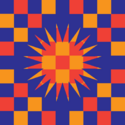Norgasek Republic
| Norgasek Republic Nolkavat Norgaseki |
||||||
|---|---|---|---|---|---|---|
|
||||||
| Motto: Nolkavat Norgaseki Gehakan! | ||||||
| Anthem: Norgase Nakan | ||||||
| Capital and | Kema | |||||
| Official languages | Soyagir | |||||
| Recognised national languages | Cotic | |||||
| Recognised regional languages | Kavrinian | |||||
| Government | Federal semi-presidential constitutional republic | |||||
| - | President | Kielm Eyafimal | ||||
| - | Chairperson of the Federal Convention | Anëcosat Nămödä ur-Căbuḑ Öse-hö | ||||
| Legislature | Federal Convention | |||||
| - | Upper house | Council of the People | ||||
| - | Lower house | Federal Assembly | ||||
| Establishment | ||||||
| - | Settlement of the Keman area | 2088 BCE | ||||
| - | Union of the Two Nations | 1654 AD | ||||
| - | Establishment of the Republican System | 1801 AD | ||||
| Area | ||||||
| - | 492,191 km2 190,036 sq mi |
|||||
| Population | ||||||
| - | 2020 estimate | 35,004,204 | ||||
| - | 2017 census | 34,742,899 | ||||
| GDP (PPP) | 2020 estimate | |||||
| - | Total | $1.598 trillion | ||||
| - | Per capita | $45,656 | ||||
| GDP (nominal) | 2020 estimate | |||||
| - | Total | $899 billion | ||||
| - | Per capita | $25,602 | ||||
| HDI | 0.91 very high |
|||||
Norgase (Soyagir: Norgasekot [noɾgasekot]), officially the Norgasek Republic, is a country located in central-west Boroso and borders the Fáknir Republic to the south. It is composed of 2 regions, comprising 21 administrative departments and 5 offshore islands in total, 3 of which are disputed. The total land area of the Norgasek Republic spans 492,191 km2 (190,036 sq mi) including disputed territory, with a population of over 30 million inhabitants. The Norgasek Republic is a federal semi-presidential democratic republic, with an administrative center and federal capital in Kema. Other cultural and economic centers include Ḑamocsëm, Oigașak, and Cägäsëm. The majority of the Norgasek Republic's inhabitants are residents of urban areas.
Etymology
The Norgasek Republic is the official English name. The term Norgase originates from the term for nationhood in Classical Ikte and was first used to describe the country as a whole in the 17th century AD, given the recent unification of the Kingdom of Urëţëc in the North and the dominant Kingdom of Soyakot. Norgase is considered to have a slightly more formal connotation, and those in the Soyakot region commonly refer to the nation as Kirahakot, which translates literally as "Girak's (Xidaxë)'s land." The name refers to a legendary tribal leader who was said to have led the first settlers of the Soyakot area.
Some describe the name Norgase as politically motivated and not equally representative of the States. Some legislators and politicians propose a new official name, in Ikte, Nolkavat Kirahakot Urukot [nolkaˈvat kiɾaxakot uɾəˌkot], in Caos, Căbuḑ Hinaţţec Urëţëc [kɒbuːð xinaθːek uɾəːθək], to be more inclusive, of the main cultural groups.
History
While Norgase's prehistory is relatively unknown, it is known that there has been continuous habitation of the area by various people since the Neolithic era. Little is known about the origin of the first Kirahak and Uruhak people groups to enter the area, though they were semi-nomadic, and as corroborated by numerous oral traditions from a number of both Kirahak and Uruhak tribes, the original peoples are thought to have originated in a north-easterly direction. Among other fragments of evidence of a north-eastern origin is the time and direction of settlement; Kema ("local area" in Soyagir) is seen as among the first settlements of the Kirahak and is the city that is in the furthest eastern area.
Given it's relative isolation with the outside world, the

